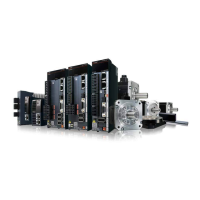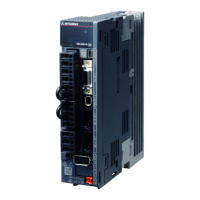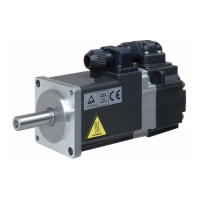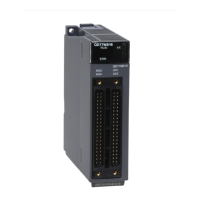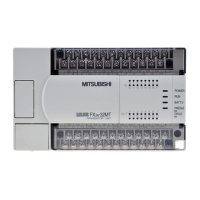2 CONTROL MODE
2.1 Control mode [G]
57
2
Homing method list
In the following cases, make sure that the Z-phase has been passed once before performing homing. If the Z-phase has not
been passed, [AL. 090.5 Homing incomplete warning] will occur.
• When using an incremental linear encoder in the linear servo motor control mode
• When using an incremental external encoder in the fully closed loop control mode
• When using a direct drive motor manufactured by Mitsubishi Electric in the direct drive motor control mode
To execute homing securely, move the linear servo motor to the opposite stroke end with csv or other operation modes from
the controller, then start homing. [Digital inputs (Obj. 60FDh)] can be used to check whether the linear servo motor has
reached the stroke end.
When changing the mode after homing finishes, set [Target position (Obj. 607Ah)] to "0", then change the control mode.
If using an A/B/Z-phase differential output rotary encoder without a Z-phase, do not perform dog type homing or homing using
a Z-phase. Doing so may cause the servo motor to keep driving without homing being completed. Perform data set type
homing or homing without using a Z-phase.
If an A/B/Z-phase differential output type encoder is used, the accuracy of homing using the Z-phase depends on the Z-phase
width in relation to the A and B-phases.
For servo amplifiers with firmware version D4 or later, the setting of [Pr. PA14 Travel direction selection (*POL)] can be
reflected to the homing direction depending on the setting value of [Pr. PT55.1 Homing POL reflection selection].
To specify the homing method in the homing mode (hm), use [Homing Method (Obj. 6098h)]. The homing methods in the
following table are supported.
Method
No.
Homing methods Homing direction
*3
Description Home position
shift function
[Pr. PA14] = 0 [Pr. PA14] = 1
-1 Dog type homing
(Rear end detection -
Z-phase reference)
Forward rotation (CCW)
or positive direction
Reverse rotation (CW) or
negative direction
Performs homing using the Z-phase pulse
after a moving part has moved past the
proximity dog.
Deceleration starts from the front end of
the proximity dog. After the rear end is
passed, the position specified by the first
Z-phase signal or the position of the first
Z-phase signal shifted by the specified
home position shift distance is used as the
home position.
Available
-33 Reverse rotation (CW) or
negative direction
Forward rotation (CCW)
or positive direction
Available
-2 Count type homing
(Front end detection -
Z-phase reference)
Forward rotation (CCW)
or positive direction
Reverse rotation (CW) or
negative direction
Performs homing using the encoder pulse
count after a moving part came into
contact with the proximity dog.
Deceleration starts from the front end of
the proximity dog. After the front end is
passed, the position specified by the first
Z-phase signal after the set distance or
the position of the Z-phase signal shifted
by the set home position shift distance is
set as the home position.
Available
-34 Reverse rotation (CW) or
negative direction
Forward rotation (CCW)
or positive direction
Available
-3 Data set type homing Performs homing without a dog.
The current position is set as the home
position.
Homing can be executed in the
Operational enabled state. Homing cannot
be executed in the servo-off status.
Not available
-4 Stopper type homing
(Stopper position
reference)
Forward rotation (CCW)
or positive direction
Reverse rotation (CW) or
negative direction
Performs homing with a workpiece
pressed against a mechanical stopper.
A workpiece is pressed against a
mechanical stopper, and the stop position
is set as the home position.
Not available
-36 Reverse rotation (CW) or
negative direction
Forward rotation (CCW)
or positive direction
Not available
-6 Dog type homing
(Rear end detection -
rear end reference)
Forward rotation (CCW)
or positive direction
Reverse rotation (CW) or
negative direction
Performs homing with reference to the
rear end of the proximity dog.
Deceleration starts from the front end of
the proximity dog. After the rear end is
passed, the position is shifted by the travel
distance after proximity dog and the home
position shift distance. The position after
the shifts is set as the home position.
Available
-38 Reverse rotation (CW) or
negative direction
Forward rotation (CCW)
or positive direction
Available

